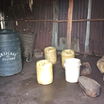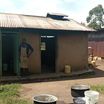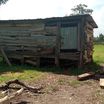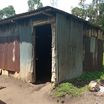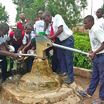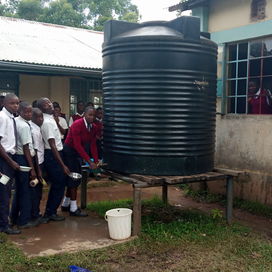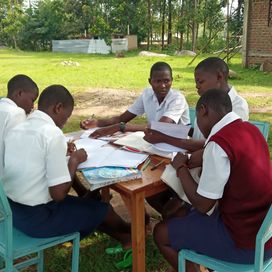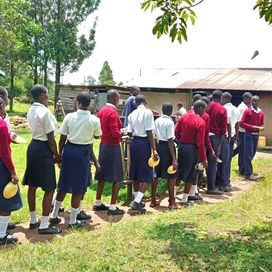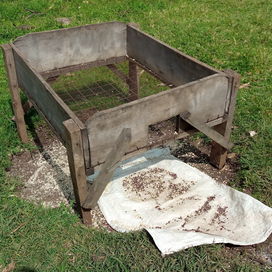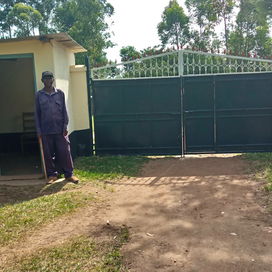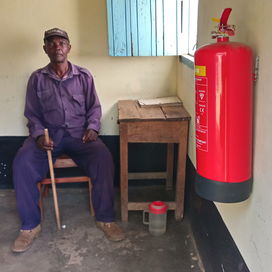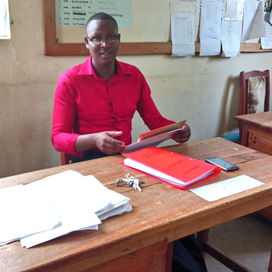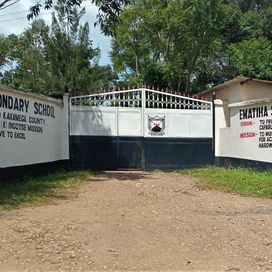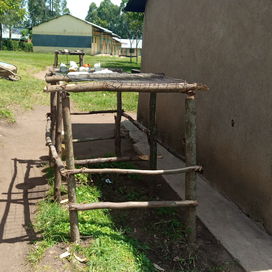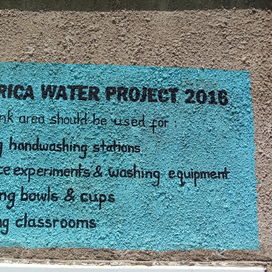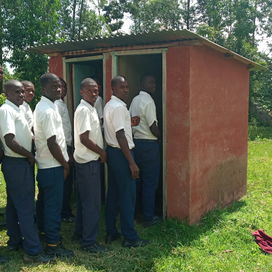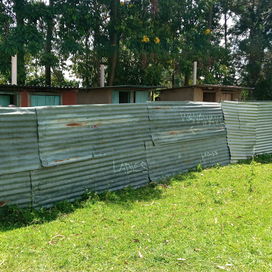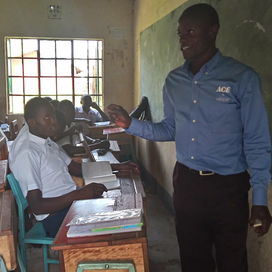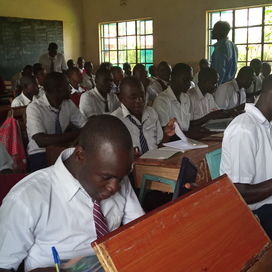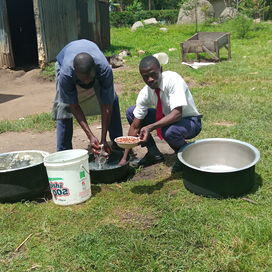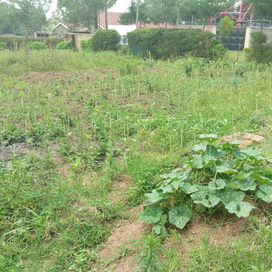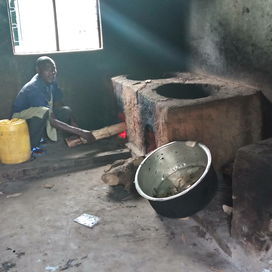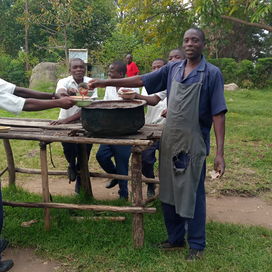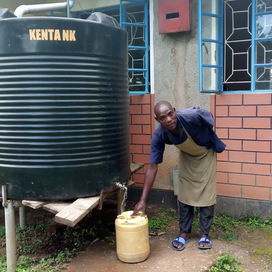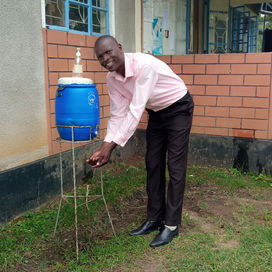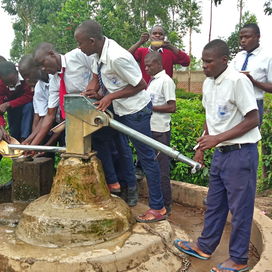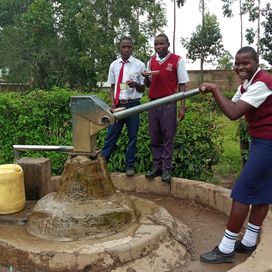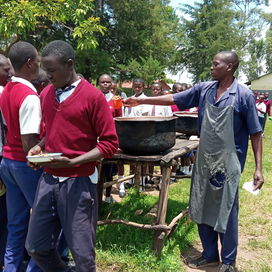Project
Ematiha Secondary School
Project Complete!
Ematiha Secondary School, located in western Kenya, first opened its doors to 27 students in 2001. It has steadily grown to have 263 students attending classes in five classrooms.
We first arrived at Ematiha Secondary School in the afternoon when it was very sunny. We met the security guard at the school gate who led me to his office to sign in first before being let inside. We walked to the school offices where we met the deputy principal, who gave us a warm welcome and proceeded to give us a tour.
The school has enough classrooms at the moment, but they don’t have adequate water available for their students. There is a plastic tank that collects rainwater, but it is not nearly enough to meet all of the students’ needs. There is another plastic tank at the school office building, but that is off limits to students.
This forces students to walk to the primary school and use their water from a well they have. “The water that come out of the tank and the borehole well, which is in the primary school section, is not good for someone to use especially for drinking purposes. The water seems to be contaminated because sometimes the students and teachers fall sick after drinking the water… We really need to be aided in getting enough water for us to use on our own here at school to curb having these problems,” said Deputy Principal Maboko.
Mrs. Maboko also said that her secondary students are missing a lot of study time because they have to walk to the other school to get water. This infringes on the primary students’ ability to get the water they need as well. Because of this, Mrs. Maboko and the administration are doing their best to ration the little water in the plastic tank.
Not having enough water means that the school sacrifices cleanliness. “The school is really trying on the hygiene and sanitation part of it but when we get enough water we shall be up to the standard of hygiene and sanitation as required,” said Teacher Dynumus.
What we can do:
Training
Training on good hygiene habits will be held for two days. The facilitator will use PHAST (participatory hygiene and sanitation transformation), ABCD (asset-based community development), CTC (child to child), lectures, group discussions, and handouts to teach health topics and ways to promote good practices within the school. The CTC method will prepare students to lead other students into healthy habits, as well as kickstart a CTC club for the school.
Handwashing Stations
Two handwashing stations will be delivered to the school, and the CTC club will fill them with water on a daily basis and make sure there is always a cleaning agent such as soap or ash.
VIP Latrines
Two triple-door latrines will be constructed with local materials that the school will help gather. Three doors will serve the girls while the other three serve the boys. And with a new source of water on school grounds, students and staff should have enough to keep these new latrines clean.
Rainwater Catchment Tank
A 50,000-liter rainwater catchment tank will help alleviate the water crisis at this school. The school will also help gather the needed materials such as sand, rocks, and water from the spring for mixing cement. Once finished, this tank can begin catching rainfall that will be used by the school’s students and staff.
We and the school strongly believe that with this assistance, standards will significantly improve. These higher standards will translate to better academic performance!
Training
Training on good hygiene habits will be held for two days. The facilitator will use PHAST (participatory hygiene and sanitation transformation), ABCD (asset-based community development), CTC (child to child), lectures, group discussions, and handouts to teach health topics and ways to promote good practices within the school. The CTC method will prepare students to lead other students into healthy habits, as well as kickstart a CTC club for the school.
Handwashing Stations
Two handwashing stations will be delivered to the school, and the CTC club will fill them with water on a daily basis and make sure there is always a cleaning agent such as soap or ash.
VIP Latrines
Two triple-door latrines will be constructed with local materials that the school will help gather. Three doors will serve the girls while the other three serve the boys. And with a new source of water on school grounds, students and staff should have enough to keep these new latrines clean.
Rainwater Catchment Tank
A 50,000-liter rainwater catchment tank will help alleviate the water crisis at this school. The school will also help gather the needed materials such as sand, rocks, and water from the spring for mixing cement. Once finished, this tank can begin catching rainfall that will be used by the school’s students and staff.
We and the school strongly believe that with this assistance, standards will significantly improve. These higher standards will translate to better academic performance!
0.360475 latitude, 34.7650467 longitude
H2O for Life is not a WASH (water, sanitation and hygiene) project implementer. We have partnerships with non-governmental organizations (NGOs) implementing WASH in Schools projects around the world. Our NGO partners match funds needed for each school project. We also have a generous donor that provides us with an interest-free loan that, along with matching funds, allows for many projects to be started or possibly even completed before total funds have been raised. In rare situations we reserve the right to reallocate funds to alternate project(s).
Questions? Ask us at 651-756-7577 or info@h2oforlifeschools.org.
Project Sponsors
May 6, 2021
Ematiha School Project Complete!
Ematiha Secondary School in Kenya now has access to a new source of safe, clean water thanks to the completion of their rain tank, which has the ability to collect...

